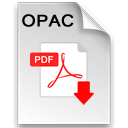<p>El trabajo presenta la traducción de un fragmento de 2163 palabras del artículo médico Brain disorders and the biological role of music del inglés al español. Para esta traducción se utilizó el software de traducción Memsource, y un glosario creado en Microsoft Excel 2010. Además el trabajo incluye un comentario que comprende 5 capítulos. El capítulo 1 introduce el tema de la traducción y contextualiza la importancia del encargo de traducción según Byrne -2012-. El capítulo 2 analiza la tipología del texto origen y sus factores extratextuales e intratextuales según Nord -1991, en Hurtado Albir, 2013-. El capítulo 3 define el proceso de traducción desde la lectura del texto, la investigación previa a la traducción, la creación del glosario, la creación del borrador, la revisión y hasta la edición. El capítulo 4 identifica el software de traducción utilizado para la creación del TM -Memsource-, sus ventajas y desventajas. Por último, el capítulo 5 analiza los problemas de traducción, clasificados por Baker -1992-, y las soluciones, propuestas por diferentes autores</p>
<p>The following project consists of the translation of 2163 word from the medical paper Brain disorders and the biological role of music, from English to Spanish. The translation was made with the computer assisted translation tool Memsource 2017 and a glossary crafted in Microsoft Excel 2010. This project includes a comment on the translation process, which is written in 5 chapters. Chapter 1 analyzes the topic of the paper, and explains the importance of the translation brief according to Byrne -2012-. Chapter 2 analyzes source text type and it extratextual and intratextual factors by Nord -1991, in Hurtado Albir, 2013-. Chapter 3 defines the translation process regarding the reading of the source text, investigating about the topic, creating the glossary, writing the translation draf, revising and editing. Chapter 4 evaluates the advantages and disadvantages of the tool used for the translation. Finally, chapter 5 analyzes the translation problems that appeared in the translation process, classified by Baker -1992- and its solutions</p>
last modification
Licenciado en Lengua Inglesa
Traductor Inglés - Españoltítulo
LICENCIATURA EN LENGUA Y LITERATURA INGLESA
<p>El trabajo presenta la traducción de un fragmento de 2163 palabras del artículo médico Brain disorders and the biological role of music del inglés al español. Para esta traducción se utilizó el software de traducción Memsource, y un glosario creado en Microsoft Excel 2010. Además el trabajo incluye un comentario que comprende 5 capítulos. El capítulo 1 introduce el tema de la traducción y contextualiza la importancia del encargo de traducción según Byrne -2012-. El capítulo 2 analiza la tipología del texto origen y sus factores extratextuales e intratextuales según Nord -1991, en Hurtado Albir, 2013-. El capítulo 3 define el proceso de traducción desde la lectura del texto, la investigación previa a la traducción, la creación del glosario, la creación del borrador, la revisión y hasta la edición. El capítulo 4 identifica el software de traducción utilizado para la creación del TM -Memsource-, sus ventajas y desventajas. Por último, el capítulo 5 analiza los problemas de traducción, clasificados por Baker -1992-, y las soluciones, propuestas por diferentes autores</p>
<p>The following project consists of the translation of 2163 word from the medical paper Brain disorders and the biological role of music, from English to Spanish. The translation was made with the computer assisted translation tool Memsource 2017 and a glossary crafted in Microsoft Excel 2010. This project includes a comment on the translation process, which is written in 5 chapters. Chapter 1 analyzes the topic of the paper, and explains the importance of the translation brief according to Byrne -2012-. Chapter 2 analyzes source text type and it extratextual and intratextual factors by Nord -1991, in Hurtado Albir, 2013-. Chapter 3 defines the translation process regarding the reading of the source text, investigating about the topic, creating the glossary, writing the translation draf, revising and editing. Chapter 4 evaluates the advantages and disadvantages of the tool used for the translation. Finally, chapter 5 analyzes the translation problems that appeared in the translation process, classified by Baker -1992- and its solutions</p>
